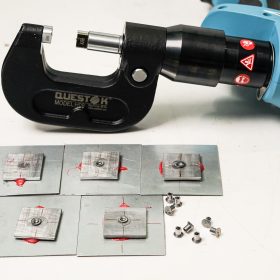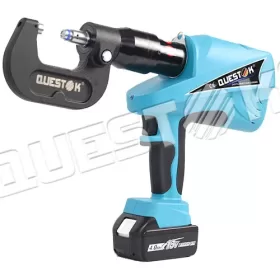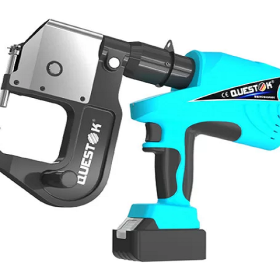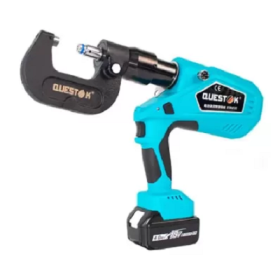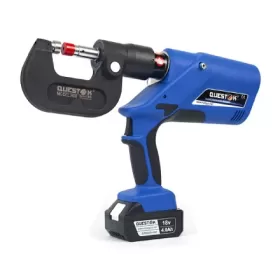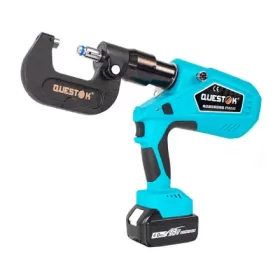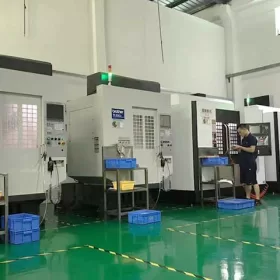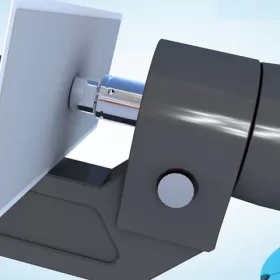Welding vs. Riveting vs. Clinching- Selecting the Best Sheet Metal Joining Technique
Sheet metal joining techniques play a crucial role in manufacturing, influencing product durability, aesthetics, and production efficiency. Understanding the distinctions between welding, riveting, and clinching is essential for determining the optimal joining method for a given sheet metal application.
Welding
Definition: Welding involves fusing two or more metal pieces together using heat and pressure.
Advantages:
Creates a permanent, high-strength bond.
Suitable for joining different metal thicknesses.
Produces a smooth, sealed joint.
Disadvantages:
Requires specialized equipment and expertise.
Can generate heat distortion and warping.
Not ideal for thin sheet metal.
Riveting
Definition: Riveting involves inserting a semi-tubular rivet into holes drilled through the metal sheets, which is then expanded to form a permanent connection.
Advantages:
Simple and cost-effective technique.
Requires minimal operator skill.
Produces a visible joint.
Disadvantages:
Creates a less strong joint compared to welding.
Can weaken the sheet metal around the rivet holes.
Not suitable for applications requiring a smooth finish.
Clinching
Definition: Clinching is a cold-forming process that interlocks two or more metal sheets by creating an overlapping seam without the use of heat or fasteners.
Advantages:
Fast and automated process.
Creates a strong, vibration-resistant joint.
Does not require additional consumables.
Produces a clean, aesthetic finish.
Disadvantages:
Limited joint configuration and thickness capabilities.
Requires specialized clinching equipment.
May not be suitable for joining dissimilar metals.
Factors to Consider When Selecting a Technique
Joint Strength: Welding offers the highest joint strength, followed by clinching and riveting.
Material Thickness: Welding is suitable for thicker sheet metal, while riveting and clinching are better suited for thinner gauges.
Aesthetic Appearance: Clinching and welding produce a smooth, sealed joint, while riveting creates a visible connection.
Production Efficiency: Clinching and riveting are faster processes than welding, with clinching offering the highest automation potential.
Cost: Riveting is the most cost-effective option, followed by clinching and welding.
Conclusion
Selecting the best sheet metal joining technique requires careful consideration of joint strength, material thickness, aesthetic requirements, production efficiency, and cost. Welding is the preferred choice for high-strength, permanent joints, while riveting is a simple and cost-effective option for less demanding applications. Clinching offers a combination of strength, aesthetics, and automation, making it a versatile choice for a wide range of sheet metal applications.
- Company News
- Industry News
- Tag
- Tags
-
The Advantages of Questok Rivet Guns: Precision, Efficiency, and Durability
In industrial fastening applications, the choice of tools directly impacts productivity, safety, and long-term cost-effectiveness. Questok rivet guns have emerged as a standout solution for professionals across aerospace, automotive, and construction sectors. Combining advanced engineering with user-centric design, these tools deliver unmatched performance. Below are the key advantages that make Questok rivet guns a preferred choice:
-
Rivet Gun FAQ
Rivet Gun FAQ-SPR
-
Fast Assembly and Repair With Cordless Solid Rivet Gun
Questok cordless solid rivet gun stands out as a pivotal innovation, merging portability with power to facilitate efficient and effective fastening in a myriad of applications.
-
Redifine The Role of Self-piercing Riveting Gun Machine
Self-piercing riveting adopts high-speed mechanical fastening skill that joins thin sheet materials, typically steel and aluminum alloys.
-
The Latest Innovations in Clinching Tool Design
Explore the latest innovations in clinching tool design, redefining precision, efficiency, and versatility in material joining.
-
The Application and Maintenance of Self-Piercing Rivet Guns
Delve into the applications of self-piercing rivet guns in the automotive and aerospace industries and reveal the essential maintenance practices that ensure their accuracy and efficiency.
-
Rivetless Riveting Gun for Ventilation Duct Projects
The ventilation duct rivetless gun is a tool for riveting ventilation ducts without rivets.
-
Guide to Using Self-Piercing SPR Riveting Gun
In the automotive industry, self-piercing SPR (Self-Piercing Rivet) riveting guns are commonly used for joining metal components in vehicle bodies, including BMW vehicles.
-
Rivet Gun FAQ
Rivet Gun FAQ-SPR
-
User-Friendly Features- Making Riveting Easy with Electric Blind Rivet Guns
Electric blind rivet guns are essential tools for industrial applications, providing a convenient and efficient way to fasten materials together. These tools have significantly advanced, incorporating user-friendly features that enhance their functionality and ease of operation. This article explores several key user-friendly features of electric blind rivet guns, highlighting how they simplify and streamline the […]
-
Unleashing Potential- Unlocking the Versatility of a Handheld Rivet Gun
In the realm of construction and fabrication, precision and efficiency reign supreme. Among the indispensable tools that empower craftsmen and DIY enthusiasts alike, the handheld rivet gun stands as a beacon of versatility and innovation. This unassuming device harbors a hidden potential that belies its compact form, offering a plethora of applications that unlock unbounded […]
-
Versatile Fastening- Applications of the Handheld Rivet Gun Across Industries
In the realm of fastening, the handheld rivet gun stands as a testament to ingenuity and versatility. Its ability to effortlessly join materials with sheer strength and permanence has revolutionized manufacturing and construction processes, leaving an enduring mark on diverse industries. Aerospace: Where precision and reliability are paramount, the rivet gun shines. In aircraft assembly, […]
-
The Role of Automation in Electric Rivetless Clinching
Electric rivetless clinching (ERC) is a lightweight joining process that eliminates the need for rivets or other fasteners. This can lead to significant cost savings and increased production efficiency. Automation plays a critical role in ERC, enabling high-speed and high-volume production. Automated Feed Systems Automated feed systems are used to accurately position the two workpieces […]
-
Why Choose a Universal Self-Piercing Riveting Gun for Your Projects?
In the realm of construction and fabrication, riveting guns stand as indispensable tools for creating secure and robust connections. Among the various types available, universal self-piercing riveting (SPR) guns have emerged as a game-changer due to their versatility and efficiency. This article will delve into the compelling reasons why choosing a universal self-piercing riveting gun […]
-
Why Choose Stainless Steel Hollow Rivets for Your Projects?
In the world of industrial manufacturing, choosing the right fasteners for your projects is crucial for ensuring longevity and reliability. Among the many options available, stainless steel hollow rivets stand out as a superior choice for a wide range of applications. This article delves into the compelling reasons why stainless steel hollow rivets are the […]
-
Top Trends in Electric Rivetless Clinching Guns
In the realm of fastening technology, electric rivetless clinching guns have emerged as a revolutionary solution for a wide range of industrial applications. These advanced tools offer several преимущества and capabilities, revolutionizing the way businesses approach their fastening needs. Adoption of Brushless Motors Brushless motors have gained significant traction in electric rivetless clinching guns due […]
